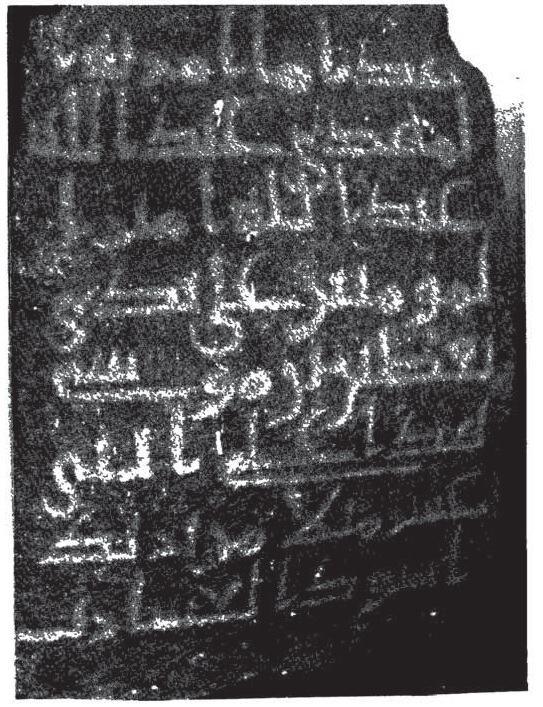A rather important find, a 'new' milestone from the reign of the Abbasid caliph al-Saffāḥ. Here are my reading and translation of it, with some brief observations:
هذا ما أمر به ا
لمهدي عبد الله
عبد الله أمير ا
لمؤمنين على يدي
يقطين بن موسى
هذا على إثني
عشر ميلا من بريد
أسود العسارى
لمهدي عبد الله
عبد الله أمير ا
لمؤمنين على يدي
يقطين بن موسى
هذا على إثني
عشر ميلا من بريد
أسود العسارى
'This is what the Mahdī, the servant of God ʿAbd Allāh, commander of the believers, has ordered. Through the agency of Yaqṭīn ibn Mūsā. This is twelve miles from the postal station of Aswad al-ʿšʾry[...]'
As the inscription indicates, the milestone was set up for the first Abbasid caliph, al-Saffāḥ. During his own reign, al-Saffāḥ was known as al-Mahdī ('the [rightly] guided'), as he was apparently held to be the awaited messianic redeemer of Islam, and was identified as such on
all his extant monumental inscription (the tally now runs to four, I'm happy to announce). After his death, however, he was posthumously restyled 'al-Saffāḥ', a term of dubious etymology usually thought to mean 'blood-shedder'. The title of al-Mahdī was subsequently bestowed on
his nephew, and the eventual heir and successor to his brother al-Manṣūr. What's also interesting here is the way in which the agents in charge of commissioning the inscription have tried to stick to the official Umayyad-era protocol for referring to the sovereign while also
accommodating the Abbasid dynast's messianic pretensions. The Umayyad-era protocol for referring to the caliph in official venues (likely established by Muʿāwiya) was the formula 'servant of God + the caliph's given name + commander of the believers', but under al-Saffāḥ his
title of Mahdī was added to the beginning (thus 'the Mahdī, the servant of God, ʿAbd Allāh, commander of the believers'). His brother al-Manṣūr is never mentioned by his title in extant official venues, but is only identified by his given name (also ʿAbd Allāh). Under the
latter's successor al-Mahdī, however, a new formula for accommodating the title was established, and in all his extant inscriptions this caliph is referred to as 'servant of God, Muḥammad, the Mahdī, commander of the believers'. With minor variations, this formula then caught on
for a while. The inscription has been found in north-central Arabia, on the pilgrimage route from Kufa, which further testifies to increased Abbasid attention to the Meccan pilgrimage and its significance. The name of the postal station (barīd) is not fully legible, but according
to my colleague Dr Harry Munt it might be identical with a place called Aswad al-ʿUshāriyyāt, known from literary sources.
Sources:
Saʿd ibn ʿAbd al-ʿAzīz al-Rāshid, 'Arbaʿat aḥjār mīliyya min al-ʿaṣr al-ʿabbāsī: dirāsa wa-taḥqīq', al-ʿUṣūr 5 (1990): 123-42.
Sources:
Saʿd ibn ʿAbd al-ʿAzīz al-Rāshid, 'Arbaʿat aḥjār mīliyya min al-ʿaṣr al-ʿabbāsī: dirāsa wa-taḥqīq', al-ʿUṣūr 5 (1990): 123-42.
Harry Munt, 'The Umayyad and Early Abbasid Inscriptions in the Prophet’s Mosque in Medina', forthcoming.
Mehdy Shaddel, 'The Development of the Meccan Sanctuary in the First Two Islamic Centuries: An Epigraphic Approach', forthcoming.
Mehdy Shaddel, 'The Development of the Meccan Sanctuary in the First Two Islamic Centuries: An Epigraphic Approach', forthcoming.

 Read on Twitter
Read on Twitter


